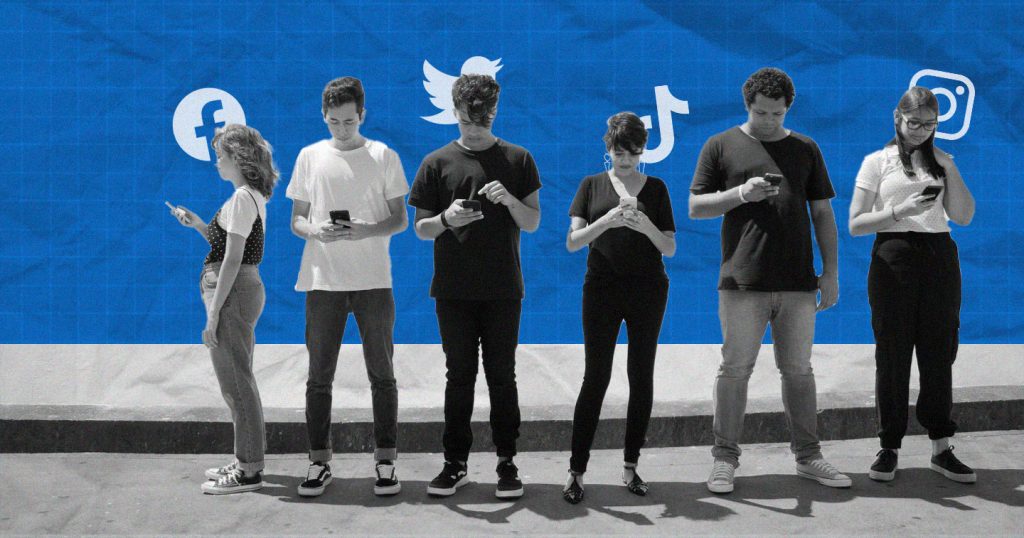Social media has proven to be an efficient platform for businesses to initiate digital marketing campaigns and build rapport with consumers. But given the diversity and cultural nuances of each country, strategies and behavioral patterns vary across the world, and even Asia alone. As the digital landscape in the Philippines continues to evolve, global marketing consultancy R3 has highlighted emerging trends in social media marketing for Filipino marketers in its recent private roundtable in Manila.
- Short-form Content: Short-form content platforms are gaining popularity with Filipino users, with TikTok tripling its market share in the last five years to reach 51% of the local internet user base in 2023. With the reduction in the attention span of humans, short-form content has become a conducive avenue for marketers to deliver snappy yet engaging brand messages.
- Social Commerce: Social commerce in the Asia Pacific as a whole, despite being in its early stages, is rapidly growing due to easy mobile accessibility and a captive audience in the right demographic. In fact, reports show that in the Philippines, 61% of Filipinos shop online and 80% of all shoppers fall into the 18-34 age range.
- Livestreaming: A social media marketing trend popularized by the online gaming community, live streaming has gained momentum within e-commerce and brought to life the concept of “shoppertainment.” Marketers utilize live streaming to showcase product demos and exclusive offers, as well as increase interaction with viewers to build a community and follower base.
- Brand Research: With the popularity of social media networks, 81% of Filipinos in 2023 have been reported to use social platforms to research the brands they encounter. This behavior highlights the importance of marketers establishing brand legitimacy on social media to increase their reliability with their target audience.
- Edutainment Content: Complementary to brand research, people nowadays look to social media to learn new skills. Posting educational content through videos makes it easier for the viewer to digest new information presented through skits or fun animations.
- Artificial Intelligence (AI): With the emergence of popular AI tools like ChatGPT, Bard AI, and Microsoft Bing AI, more marketers are using them to generate content. Whether it’s to write captions within seconds or conceptualize surrealistic video ads, artificial intelligence is one of the latest social media marketing trends on the rise.
- YouTube Shorts: Creating short-form videos is generally targeted on platforms like Instagram or TikTok. However, with the emergence of YouTube Shorts and its increasing popularity, it’s an excellent network to engage with a brand’s audience.
- User-Generated Content: When doing brand and product research, consumers want authentic content from actual brand patrons to push them to buy from the brand. And with user-generated content such as product reviews and reposts, consumers gain insight into how brands can add value to their day-to-day lives. Not only does this trend help increase brand awareness, but also builds a strong and positive image.
- Photo Dumping: One of the popular trends in social media posting currently is to dump photos in one post instead of uploading them frequently. From the perspective of marketers, this can be utilized by creating a photo dump to highlight the features of a product line or to showcase an event.
- Relevant and Shareable Content: A continuously popular social media marketing trend in the Philippines is to share funny memes and relatable content that reflect current events––whether it’s pop culture or serious campaigns. Marketers from brands like Angkas have shown this to be an effective way to build awareness and engagement by leveraging the good-natured sense of humor of Filipinos.

Filipino consumers’ online behavior and how they engage with content
The Philippines is one of the most active social media communities in Southeast Asia, boasting around 84.45 million active users. As the majority of people access social media through their mobile phones, it’s no surprise that short-form content has rapidly gained popularity since its arrival. The appeal can be attributed to factors such as the capacity to deliver an entertaining yet succinct message; provide content in a vertical structure that’s aligned with mobile phones; and have lower data consumption — an important consideration for a country still grappling with low internet speeds due to an islandic geography. Additionally, the growing influence of e-commerce has resulted in a higher demand for content that informs purchasing decisions, with 44.1% of Filipinos discovering new brands and products through social media ads.
What brands can learn from Filipinos’ online activities and how to navigate social platforms
Understanding where, what, and how Filipino consumers behave online will help navigate how brands can use social media in the new normal and let them plan an effective digital strategy. Recent statistics show that almost 80% of Filipinos primarily use the internet for research and information, and social media as a tool for communication with friends and family. Brands need to ensure that their social strategy covers brand or product education to allow consumers to research within the platform; include commerce capabilities for easy shopping within the platform; and curate engaging videos to keep consumers hooked while waiting for chat responses.

The role of e-commerce and online shopping in developing and supporting social media marketing trends
The ease of shopping online via marketplaces or social platforms has supported the rise of #Budol culture, an evolution from the #TikTokMadeMeBuyIt trend. Budol, in its most literal sense, means to be persuaded by another person on social media to buy a product. This is essentially online word-of-mouth marketing that could reach any part of the country, not limited by any physical or relational boundaries.
How marketers and brands can take advantage of these trends
It’s even more important now for brands to build partnerships with trusted influencers, with added emphasis on authentic creator-led content to gain social share of voice. Marketers should also listen to any feedback from creators and positive and/or negative audience comments, and respond accordingly to build the consumers’ trust in the brand.
Brands’ interaction with agency partners, and guidelines for social marketing trends
Brands need to ensure that their agency partners can serve any current and immediate digital needs, as well as support their future ambitions. Embed transparency into client-agency ways of working through audits and regular reporting, and motivate agency performance with the right compensation structure.










